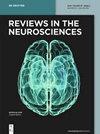θ脉冲刺激用于增强中风后的上肢运动功能:临床和机理证据的系统回顾
IF 3.4
3区 医学
Q2 NEUROSCIENCES
引用次数: 0
摘要
本系统综述旨在评估不同的θ脉冲刺激(TBS)方案对改善脑卒中患者上肢运动功能的效果、相关的疗效调节因素以及潜在的神经机制。我们对 2000 年 1 月 1 日至 2023 年 8 月 29 日期间发表的 29 项对照试验进行了荟萃分析综述,研究了 TBS 对脑卒中后患者上肢运动、神经电生理和神经影像学结果的影响。与对照组相比,TBS能明显改善上肢运动障碍(Hedge's g = 0.646,p = 0.003)和功能活动(Hedge's g = 0.500,p < 0.001)。元回归显示,皮层下中风患者的比例与运动障碍(p = 0.015)和功能活动(p = 0.018)的效应大小之间存在显著关系。亚组分析显示,使用 600 脉冲和 1200 脉冲 TBS 的研究在改善上肢运动障碍方面存在显著差异(p = 0.002)。神经生理学研究一致发现,间歇性 TBS 可提高同侧皮质运动神经兴奋性。然而,支持连续 TBS 的区域效应以及 TBS 的远程效应和网络效应的证据仍然参差不齐,相对不足。总之,TBS 能有效增强卒中后的上肢运动功能。大脑皮层保留的患者可能对 TBS 反应更好。与传统的 600 脉冲方案相比,剂量更大的新型 TBS 方案可能会带来更好的疗效。TBS促进卒中后恢复的机制主要归因于皮质运动兴奋性的调节,可能是由于与同侧运动皮质相连的皮质运动网络的招募所致。本文章由计算机程序翻译,如有差异,请以英文原文为准。
Theta burst stimulation for enhancing upper extremity motor functions after stroke: a systematic review of clinical and mechanistic evidence
This systematic review aimed to evaluate the effects of different theta burst stimulation (TBS) protocols on improving upper extremity motor functions in patients with stroke, their associated modulators of efficacy, and the underlying neural mechanisms. We conducted a meta-analytic review of 29 controlled trials published from January 1, 2000, to August 29, 2023, which investigated the effects of TBS on upper extremity motor, neurophysiological, and neuroimaging outcomes in poststroke patients. TBS significantly improved upper extremity motor impairment (Hedge’s g = 0.646, p = 0.003) and functional activity (Hedge’s g = 0.500, p < 0.001) compared to controls. Meta-regression revealed a significant relationship between the percentage of patients with subcortical stroke and the effect sizes of motor impairment (p = 0.015) and functional activity (p = 0.018). Subgroup analysis revealed a significant difference in the improvement of upper extremity motor impairment between studies using 600-pulse and 1200-pulse TBS (p = 0.002). Neurophysiological studies have consistently found that intermittent TBS increases ipsilesional corticomotor excitability. However, evidence to support the regional effects of continuous TBS, as well as the remote and network effects of TBS, is still mixed and relatively insufficient. In conclusion, TBS is effective in enhancing poststroke upper extremity motor function. Patients with preserved cortices may respond better to TBS. Novel TBS protocols with a higher dose may lead to superior efficacy compared with the conventional 600-pulse protocol. The mechanisms of poststroke recovery facilitated by TBS can be primarily attributed to the modulation of corticomotor excitability and is possibly caused by the recruitment of corticomotor networks connected to the ipsilesional motor cortex.
求助全文
通过发布文献求助,成功后即可免费获取论文全文。
去求助
来源期刊

Reviews in the Neurosciences
医学-神经科学
CiteScore
9.40
自引率
2.40%
发文量
54
审稿时长
6-12 weeks
期刊介绍:
Reviews in the Neurosciences provides a forum for reviews, critical evaluations and theoretical treatment of selective topics in the neurosciences. The journal is meant to provide an authoritative reference work for those interested in the structure and functions of the nervous system at all levels of analysis, including the genetic, molecular, cellular, behavioral, cognitive and clinical neurosciences. Contributions should contain a critical appraisal of specific areas and not simply a compilation of published articles.
 求助内容:
求助内容: 应助结果提醒方式:
应助结果提醒方式:


